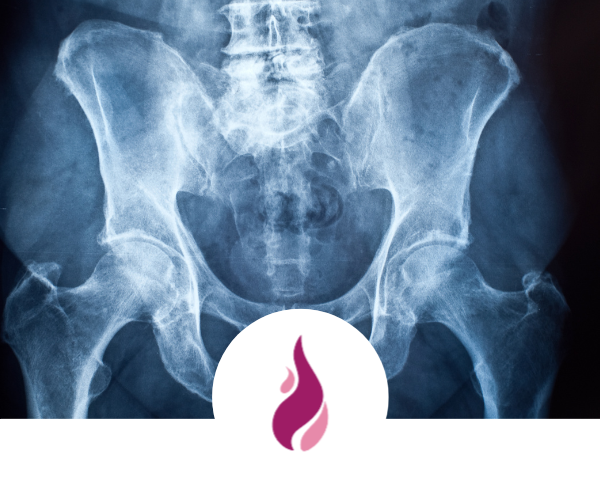Menopause is Inevitable, Osteoporosis is Preventable

Usually, we don’t think about our bones until something goes wrong. Just because they live in the dark does not mean we should take them for granted, however! Menopause has a direct impact on your bone health and can significantly increase your risk of osteoporosis and osteopenia (the stage before osteoporosis).
We explore the reasons why, and some of the ways you can reduce your risk.
What is osteoporosis?
Osteoporosis is a disease which reduces the quality and bone mineral density of your bones and increases your risk of fragility fractures – these are fractures which are caused by low impacts, such as a fall from standing height or sneezing.
While osteoporosis can affect anyone, it is more common in women, with 1 in 2 women over the age of fifty expected to develop the disease.
What has the menopause got to do with osteoporosis?
Hormones play a direct role in regulating our bone density. Oestrogen and testosterone (yes, women have testosterone too!) are responsible for regulating our bone health.
Our hormone levels start to decrease during perimenopause and throughout menopause. As oestrogen levels drop, more bone is reabsorbed than laid down, increasing your risk of osteoporosis.
Can you reverse osteopenia and osteoporosis?
The good news is whilst menopause is inevitable, osteoporosis isn’t! There are lots of ways you can minimise your risk and proactively prevent osteoporosis from developing.
Through exercise, nutrition, and other positive lifestyle changes, you have the power to reignite your bone production and improve your bone density.
Leading a sedentary lifestyle (such as spending too much time behind a computer!) limits how much bone our stem cells can produce. Bones are much happier when we get active and exercise.
Weight-bearing exercises such as running, jumping and skipping are most effective and help give our bone cells some of the stimulation they need. An active healthy lifestyle goes a long way to improving your bone heath, and it doesn’t stop there…
Introducing the Marodyne LiV device
First developed by NASA as a non-invasive, drug-free way to stabilise the bones of their astronauts, the Marodyne LiV is now well-established as the world’s first – and only – medically approved device proven to prevent and combat osteoporosis.
So, how does Marodyne LiV work?
The Marodyne LiV device naturally builds stronger bones using Low-intensity Vibrations (LiV).
These vibrations are precisely set to a low-magnitude, high frequency signal of 0.4g at 30 Hz. Decades of scientific research has proven this signal will stimulate your body’s stem cells to produce bone and muscle tissue.
The device is quick and simple to use. All you have to do is stand on the platform for 10 minutes a day. That’s it! As you do so, you’ll feel the gentle vibrations send a pleasant buzz through your body.
Is the Marodyne LiV supported by clinical research?
The Marodyne LiV device is supported by over 35 years of clinical studies and has been proven to help prevent osteoporosis in postmenopausal women and promote bone and muscle growth in younger osteoporotic women.
And the benefits don’t stop there. The device is certified by the British Standards Institution (BSI) as a Class IIa medical device and is proven to maintain and increase bone mineral density, improve balance, increase muscle strength and boost your circulation – all with no known contraindications or side effects.
The Marodyne LiV can be used with confidence as a standalone therapy or in conjunction with any other treatment or therapy, such as HRT.
What makes the Marodyne LiV different to other vibrating platforms?
You may have seen other vibration platforms in other places such as your gym. Whilst both can be classified as whole-body vibration (WBV), these are not the same as the Marodyne LiV device.
The important difference is in the intensity. High intensity vibrations platforms, like those found in gyms, vibrate at a high intensity often far exceeding 1.0g. This level of vibration has significant side effects which make is unsuitable for many users, such as those with osteoporosis.
By contrast, the Marodyne LiV device uses a low intensity of 0.4g, which is less than the impact of walking. This means the device has no known contraindications or side effects and can be used with confidence by both children and adults.
Learn more about the Marodyne LiV Device